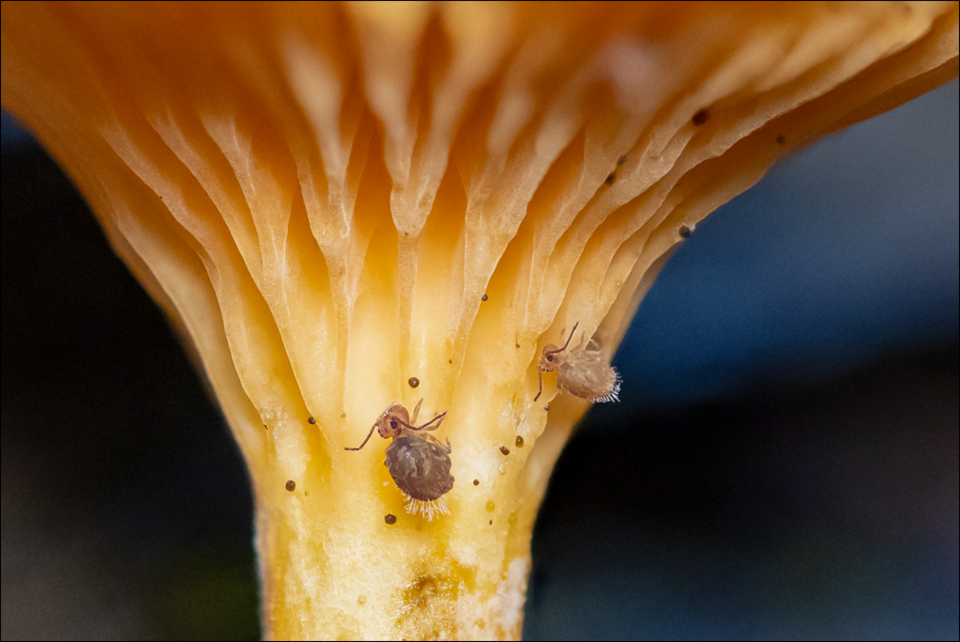As we walk through our natural surroundings, we may unwittingly pass thousands of tiny soil inhabitants. The soil is neither inert nor boring, but is actually teeming with life on many scales. It’s a home for bacteria that perform composting actions that make nutrients available, a home for tiny fungi that break down wood fibres
and leaves, and it contains a full ecosystem of interacting invertebrates.
On a larger scale, we may be familiar with things like millipedes, centipedes, spiders and beetles, many of which are fairly visible to us even at their smallest, but there’s another size level between the micro and macro, the so-called “mesofauna.” Among them, we have everything from herbivores like many springtails that graze on algae, yeast, pollen, and fungi, up to tiny pursuit predators like mites and pseudoscorpions that have to catch and eat their prey. It’s a wild kingdom down there on a tiny scale.
You may not have heard about springtails before, but they are tiny, non-insect invertebrates that have six legs and no wings. They can live in basically any terrestrial environment from mossy forests to grassy plains, and even deserts or the sea shore. They can live under the soil or in leaf litter on the forest floor, but many also climb up and live on plants and trees.
One thing that makes springtails unique and gives them their name is their fantastic escape tool—curled underneath them, they have a powerful jumping mechanism that can instantly propel them away from danger, almost like a fighter pilot’s ejection seat! They hold it in place against their belly, ready at any moment to quickly flip it out against the ground and spring away to safety.
Although there are currently about 9,000 species of springtails known from around the world, there are probably many more we haven’t found yet. Here in the wet forests and mountains of the Pacific Coast, we have such a beautiful variety of them, and yet many are still unknown to science. Despite many of them having intricate and colourful patterns, their tiny size and their ability to hide within forest moss and leaf litter means a lot of them have still evaded our notice.
Next time you’re out for a walk in the woods, take a close look at a wet, mossy log and you may see a bunch of these slow-moving critters grazing on the thin layer of algae and yeast on the log’s surface. They’re a bit easier to find with a magnifying glass or loupe. If you have a camera that’s able to zoom in, you can also record your sightings on iNaturalist and someone might be able to tell you what species you’ve found. But who knows? Maybe the tiny springtail you’ve spotted is an entirely new species no one has seen before. Keep your eyes peeled!
Naturespeak is prepared by the Whistler Naturalists. To learn more about Whistler’s natural world, go to whistlernaturalists.ca. Join the Naturalists at 7 p.m. on Wednesday, July 30 at the Whistler Public Library for Pete’s presentation on these fascinating creatures. Admission by donation.




